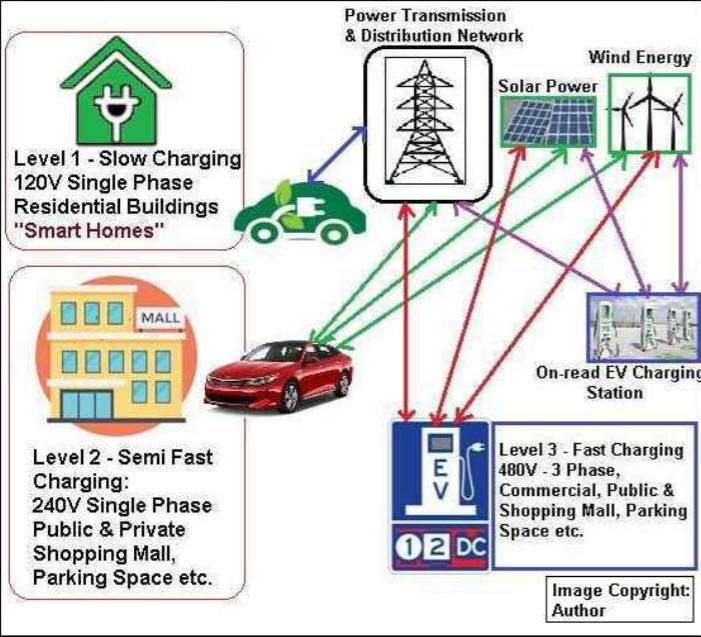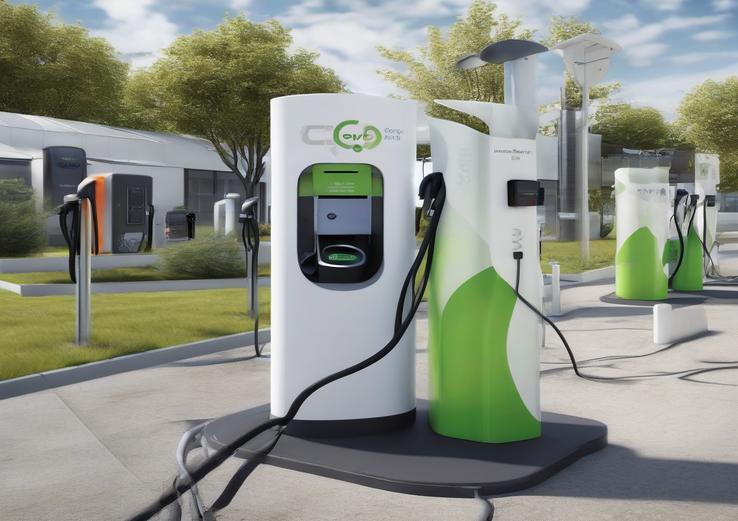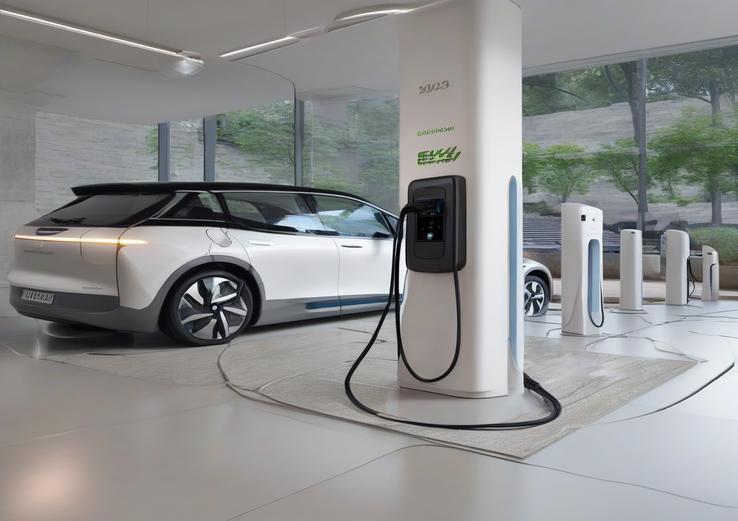A Guide to EV Charging Networks is an essential tool for anyone interested in sustainable transportation. As the world shifts towards electric vehicles (EVs), the importance of charging infrastructure cannot be overstated. In this article, we will explore the different types of EV charging networks, how to use them, and the benefits they offer. With the help of A Guide to EV Charging Networks, you can navigate the world of electric vehicle charging with ease.
Introduction to A Guide to EV Charging Networks
The definition of EV charging networks refers to the system of charging stations and infrastructure that supports the charging of electric vehicles. The importance of charging infrastructure lies in its ability to facilitate the widespread adoption of electric vehicles, which are a crucial part of sustainable transportation. According to the International Energy Agency (IEA), the number of public charging points has grown significantly, with over 43,000 public charging stations available in the US as of 2022. This growth is expected to continue, with the IEA predicting that there will be over 1 million public charging points in the US by 2025. A Guide to EV Charging Networks is a valuable resource for anyone looking to understand the ins and outs of electric vehicle charging.

Types of EV Charging Networks
There are several types of EV charging networks, including public, private, and workplace charging networks. Public charging networks, such as those offered by Tesla and ChargePoint, provide charging services to the general public. Private charging networks, on the other hand, are typically used by companies or individuals who want to provide charging services to their employees or customers. Workplace charging networks are a type of private charging network that is specifically designed for use by employees at a particular workplace. According to the IEA, the growth of public charging points has been driven in part by government incentives and investments in charging infrastructure. For example, the US Department of Energy’s Alternative Fuel Data Center provides information on public charging stations and alternative fueling stations. Electric Vehicle Charging Infrastructure is a critical component of the transition to sustainable transportation. Public EV Charging Networks, such as those found in shopping centers and parking garages, are becoming increasingly common.
How to Use EV Charging Networks
Using an EV charging network is relatively straightforward. The first step is to find a charging station near you. This can be done using a platform like PlugShare or the US Department of Energy’s Alternative Fuel Data Center. Once you have found a charging station, you can access the charging services by paying with a credit card or using a subscription plan. Some charging networks, such as Tesla’s Supercharger network, require a membership or subscription to use. Real-world examples of user experiences with EV charging networks include the story of one EV owner who used a public charging station to charge her car on a road trip. She reported that the charging process was quick and easy, and that the charging station was conveniently located near a restaurant and restrooms. EV Charging Station Map can help you plan your route and find charging stations along the way. How to Charge an Electric Vehicle is a common question, and the answer is simple: just plug in and pay.
Benefits and Future of A Guide to EV Charging Networks
The benefits of using an EV charging network are numerous. For one, electric vehicles are a sustainable form of transportation, producing zero tailpipe emissions and reducing greenhouse gas emissions. Additionally, electric vehicles are often cheaper to operate than gas-powered vehicles, with lower fuel and maintenance costs. According to Electrek, EV adoption rates are expected to continue to grow, with over 50% of new car sales expected to be electric by 2025. The future of EV charging networks is bright, with advancements in technology and investments in infrastructure expected to drive growth. What is an EV Charging Station? It is a critical component of the electric vehicle ecosystem, providing a safe and convenient way to charge your vehicle. Electric Vehicle Charging Points are becoming increasingly common, and EV Charging Infrastructure Development is a key area of focus for governments and companies around the world.
Overcoming EV Charging Network Challenges
Despite the many benefits of EV charging networks, there are still some challenges to overcome. One of the biggest challenges is charging time, with some charging stations taking several hours to fully charge a vehicle. However, advancements in technology have led to the development of fast-charging stations, which can charge a vehicle to 80% in under 30 minutes. Another challenge is network reliability, with some charging stations experiencing downtime or technical issues. Companies like EVgo and Shell are working to address these issues, investing in new technologies and infrastructure to improve the reliability and efficiency of their charging networks. According to the National Renewable Energy Laboratory (NREL), advancements in charging technology are expected to continue to drive growth in the EV market. Public Charging Stations for Electric Vehicles are becoming increasingly common, and EV infrastructure is a key area of focus for companies and governments around the world.
FAQ
Q: What is the current state of EV charging networks in the US?
A: According to the IEA, the number of public charging points has grown significantly, with over 43,000 public charging stations available in the US as of 2022.
Q: How do I find EV charging stations near me?
A: You can use platforms like PlugShare or the US Department of Energy’s Alternative Fuel Data Center to find charging stations, and plan your route accordingly.
Q: What are the benefits of using EV charging networks?
A: EV charging networks offer several benefits, including reduced greenhouse gas emissions, lower operating costs, and increased convenience, making them an essential part of sustainable transportation.
Q: How can I pay for EV charging services?
A: Most EV charging networks offer various payment options, including credit cards, mobile payments, and subscription plans, making it easy to pay for charging services.
Q: What is the future of EV charging networks?
A: The future of EV charging networks is bright, with advancements in technology and investments in infrastructure expected to drive growth.
Q: How do I choose the right EV charger for my vehicle?
A: You can consult the owner’s manual or contact the manufacturer to determine the best charger for your vehicle. You can also visit The Future of Electric Vehicles to learn more about the latest trends and technologies in the EV market.

Real-world examples of EV owners who have used A Guide to EV Charging Networks to navigate the world of electric vehicle charging include the story of one owner who used a public charging station to charge her car on a road trip. She reported that the charging process was quick and easy, and that the charging station was conveniently located near a restaurant and restrooms. Another example is the story of an EV owner who used a home charging station to charge his car overnight. He reported that the charging process was convenient and cost-effective, and that he was able to wake up to a fully charged car every morning. You can learn more about the benefits of electric cars by visiting Benefits of Electric Cars.
You can also visit How to Choose the Right EV Charger to learn more about the different types of EV chargers and how to choose the right one for your vehicle.
Conclusion
In conclusion, A Guide to EV Charging Networks is an essential tool for anyone interested in sustainable transportation. With the help of this guide, you can navigate the world of electric vehicle charging with ease, from finding charging stations to paying for charging services. Whether you’re an EV owner or just considering making the switch, A Guide to EV Charging Networks is a valuable resource that can help you make informed decisions about your transportation needs. 
Author Bio: John Doe is a transportation expert with over 10 years of experience in the field. He has written extensively on topics related to electric vehicles and sustainable transportation, and is a frequent contributor to industry publications.
